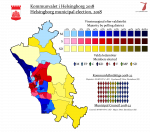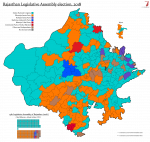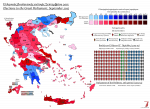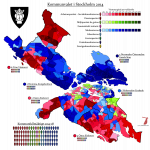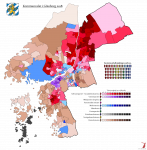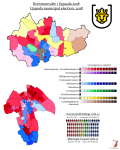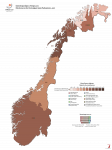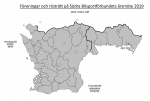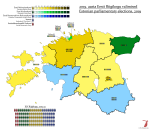I talked to
@Heat a while ago about the possibility of mapping the State Duma elections in the Russian Empire, and well, today I found the electoral law in a source citation on the Russian Wikipedia. Turns out it's quite a simple affair, because the elections were held in the individual guberniyas (provinces), which were for the most part not subdivided into constituencies. The exception was that the 20 principal cities of the empire formed separate constituencies, which used a distinct voting method from the "rural" constituencies. Both, however, were indirect - there was a highly conservative four-class franchise that looked quite a lot like something
@Ciclavex might use in his TL. The following groups were entitled to choose electors:
- Landowners who held more than a certain amount of land (the limit was between 100 and 650
desyatiny, or about 250 and and 1500 acres) depending on where you were) or held immovable property worth at least 15,000 rubles formed the
first curia, which chose one elector per 2,000 voters.
- Urban voters, who either owned immovable property above a certain limit or met certain other specifications (which presumably also differed from place to place), formed the
second curia, which chose one elector per 4,000 voters.
- Self-owning peasants above the age of 25 who did not hold enough land to qualify for the first curia formed the
third curia, which met in the volosts (traditional self-government units) and chose representatives to uyezd-level (between a guberniya and a volost in size, about the same as a modern raion or a German Landkreis) assemblies who in turn chose one elector per 40,000 voters in the uyezd.
- Workers above the age of 25 employed in businesses with at least 50 employees formed the
fourth curia, which chose representatives for each individual enterprise who in turn chose one elector per 90,000 voters.
Obviously, this left out a fair few people. Women, most notably, but also small business employees, anyone below 25 who didn't own large amounts of property, some classes of civil servants (most notably the police and military), and of course, every group that was usually disqualified from voting in systems like this - anyone bankrupt, anyone convicted by a criminal court, anyone under legal guardianship, and so on.
The electors all then met in an electoral assembly (all four curiae in the rural constituencies, only the second and fourth in the cities), and chose as many deputies as the guberniya was entitled to send, which was anywhere from one to fifteen. The discrepancies between this and the Constituent Assembly apportionment were such that I think both of them can't have been purely by population, and well, I trust the Provisional Government over the Tsarists on that particular score.
You'd expect this system to return a massively right-wing assembly, wouldn't you? Well, not in Russia. Remember that there had just been a revolution on, which was the reason they were even holding elections at all. Before this they'd chugged along "fine" under the mostly-appointed State Council, and many conservatives made it very clear that they preferred it that way by abstaining from the Duma elections. Most of the left, too, were upset by the lack of genuine democracy, and sat the election out (although the very moderate Trudoviks did stand and formed the second-largest party, and a few Social Democrats won election as independents). The result was that the Duma as elected was more or less Peak Radical Centrism, with the Constitutional Democratic Party (or Kadets for short), sometimes also called the Party of People's Freedom, as by far the largest party with 179 of 478 seats. Including the Trudoviks to their left and the Progressives and Democratic Reformists to their right, a liberal-democratic bloc held a large majority in the First Duma.
The majority elected Sergei Muromtsev, a law professor and prominent Kadet, to the Presidency of the Duma, and he tried his very best to control proceedings, but it was a complete write-off from the start. The deputies were all very angry, might've disagreed on what they were angry about, but did mostly agree that the Tsar was to blame. They passed resolutions calling for freedom of the press, freedom of assembly and the immediate release of political prisoners, and over three hundred grievances were brought against the government by individual deputies. The Tsar dissolved the Duma within two months of its session, but a group of Kadets including Muromtsev moved their session up the rail line to Viborg, where they signed the "Viborg Appeal" calling for the Tsar to respect the democratic process. For their trouble, they were thrown in jail and barred from participating in the next election, which ended up looking quite different as a result.
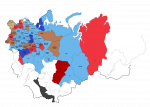
I wasn't able to find information for the Caucasus, Central Asia (mostly) or eastern Siberia, because elections there were held under special legislation and the electoral law made no specific apportionment for them (this is probably also true of western Siberia, only I found a separate document for the elections there). That said, those should amount to about 50-60 seats, so we have the vast majority shown. It's also worth noting that only some of the brown little mans are actually independents - probably the majority are cases where I wasn't able to find anything out, either because I was unable to parse the blurb in the Russian-language catalogue of deputies I used to work out party affiliations, or because they just straight-up weren't listed.






